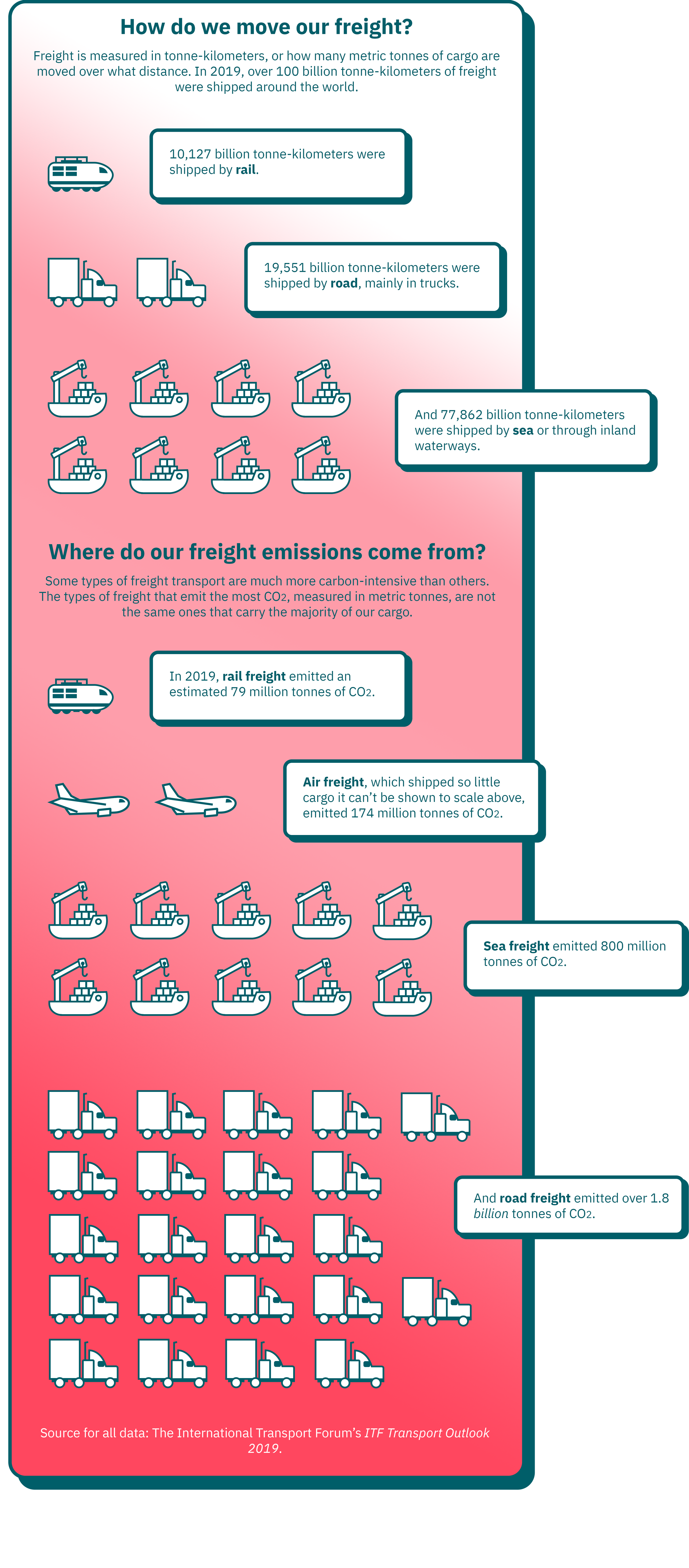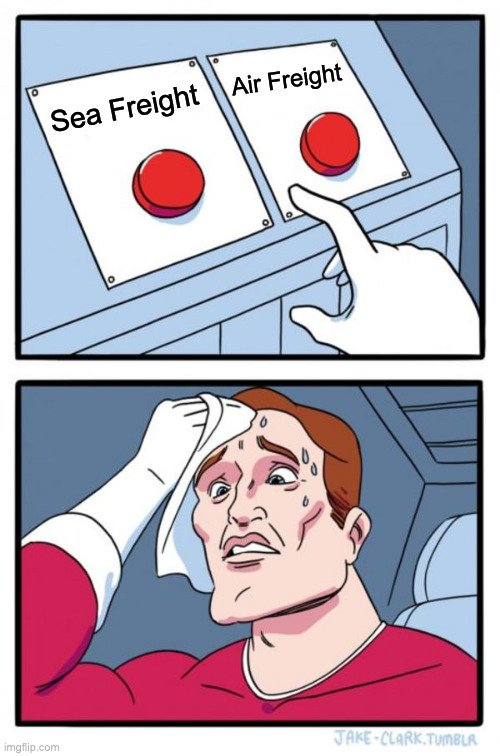A lot of colleagues have recently posted and re-posted this New York Times article from June 23, 2022 about reducing the carbon footprint of the art world. This push tends to include the use of sea freight to replace air freight. The Gallery Climate Coalition, the most cited and outspoken organization advocating for a more sustainable art world, vehemently advocate for this, for example. The logic of the argument focuses on carbon emissions where air freight vastly out-pollutes sea freight. While I fully side with the GCC’s goals and intent, sea freight hardly qualifies as clean as it emits other noxious bi-products including CO2 by fueling the tens of thousands of ocean vessels with fossil fuels.
Air Freight
Shipping objects by air provides the core benefits of more consistent schedules, faster travel, and abundant availability. This makes it ideal for high-value objects where reduced transit time and variables lowers the risk of incident. It, of course, costs significantly more especially for larger objects.
Air freight also emits disproportionately more carbon dioxide relative to the amount of freight it transports which has, consequently, united the arts sector to demand a reduction in its use. Carbon dioxide, however, belongs to a much larger family of toxins that qualify as greenhouse gases and should not exclusively determine how we ship.
Sea Freight
Sea freight has a notorious reputation as incredibly slow and inconsistent. Additionally, recent global supply chain disruptions and a general lack of refrigerated containers have further hampered this mode of transportation. However, the economics make it the only logical solution for high-volume shipments.
The consideration of sea freight as a regular alternative to air freight will prematurely gray the hair of every registrar in the industry as the transport schedules will require significantly more advance planning and will not arrive at predictable times. More importantly, that extra stress, though less expensive, does not reduce the harm to the planet any less.
According to the Yale Climate Connections, maritime shipping is responsible for roughly 3% of the global greenhouse gas emissions and runs almost exclusively on fossil fuels. Ocean transportation accounts for nearly three quarters of global freight and produces up to 20% of the world’s black carbon, a short-lived pollutant tied to increased melting rates of glaciers and sea ice.
I hesitate to cite this article because it does not show its sources, but if we believe it, whether air or sea freight, they both roughly excrete a similar amount of overall emissions. Sources or not, the point remains roughly the same: if we sacrifice all of the convenience and reduced risk of air freight and begin to ship by sea, we will not harm the planet any less.
Alternatives
Once we come to terms with the reality of maritime environmental shortcomings, we must decide how to move our collections in a way that truly emits less. I will caveat this, though, by saying that technological innovations like alternative fuels and new boat designs may eventually change all of this. I hope they do because we need overall a new fleet of options.
I have been advocating for a while (here, here, here, and here) and have another, more-detailed paper coming out later this year that more loudly beats the drum that we must do the real work of beginning to fundamentally changing how we lend. We will not stop shipping objects but should ship them less and do so in an efficient way that reduces overall exhibition emissions. By advocating for loan and shipping efficiency, we not only reduce emissions but also reduce costs and risk to the collections. Economic Eclipse.
Likewise, as an industry, we need to pressure the shipping market to move toward zero and low-emission road transportation. EVERYTHING touches a truck. The “last mile” (and first) as they say. Objects have to get to and from the ports somehow.
As you can see in the chart above, road vehicles make up 62% of transportation emissions making them the logical true target.
Fortunately, trucks and vans are good candidates for the use of greener technology.
Further, whenever possible, use the smallest available vehicle to transport your collections and plan your routes better. An industry-wide Manhattan Project should focus here: literally creating new shipping and loaning policies and practices.
In short: Ship less and travel less. If you can plan far enough ahead to use sea freight, you can plan far enough ahead to better route that exhibition.
I will reiterate a point I made in another post: that institutions should publicize the improvements they make as a way of demonstrating their attempts to reduce emissions. We should come to expect as an industry that everyone aims to suck the air out of the room of fossil fuels, and publicity toward that aim will go a long way. A rising tide lifts all boats.



